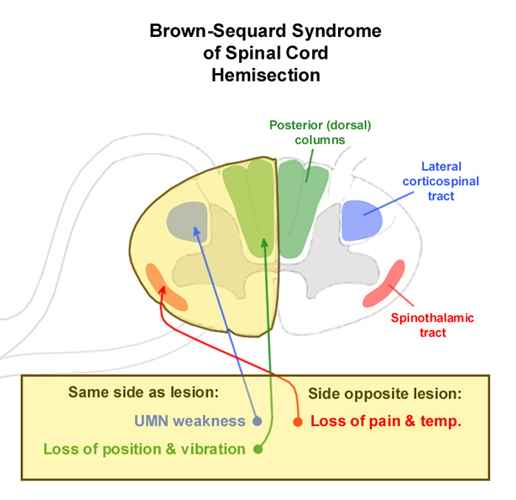In the Brown-Séquard syndrome the signs and symptoms can be explained by
- interruption of the lateral corticospinal tracts
- interruption of dorsal column axons
- interruption of lateral spinothalamic tracts and anterolateral system
The segmental injury to the cord usually damages the motoneurones innervating muscles of that myotome, with a hypotonic paralysis in which the muscles are deprived of their innervation.
The spastic paralysis below the lesion is due to activity in the motoneuones that are still in contact with their muscles. The mechanisms underlying spastic paralysis will be discussed later.
Ipsilateral loss of fine touch sensation, vibration sense and proprioception below the level of the lesion is due to section of the dorsal columns
Contralateral loss of pain and temperature sensation usually occurs 2-3 segments below the level of the lesion, because the spinlothalamic system crosses the cord within a few segments of the segment of origin of the peripheral pain pathway.
As the spinothalamic tract carries the sense of crude touch, the loss of this sensation corresponds to that of the pain pathway. The patient will not be able to localize where they were touched, only that they were.
|
 *
*